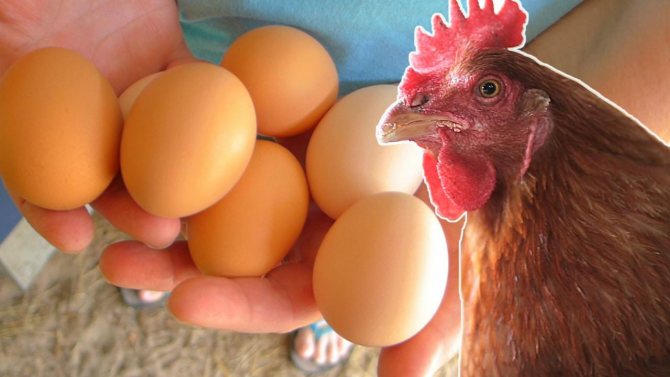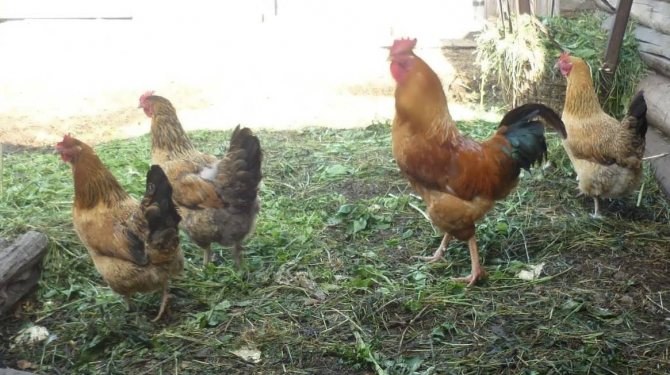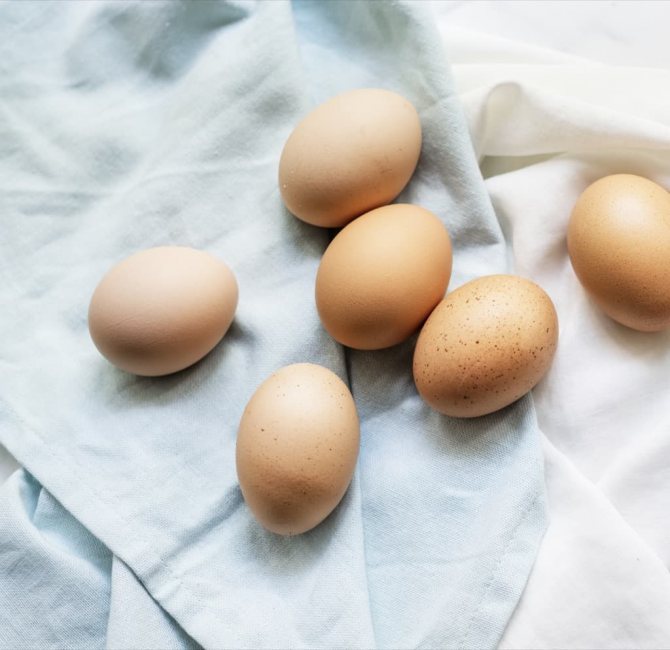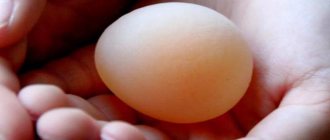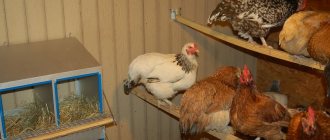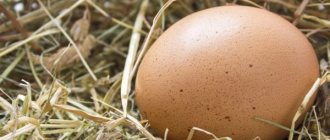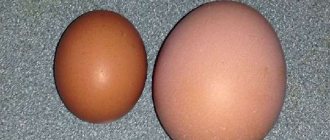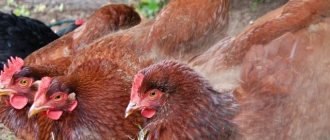Home »Articles about chickens» How long does a chicken fly?
To calculate the planned "yield" of eggs, you should take into account the productive characteristics of the breed, as well as know at what age pullets begin to lay. It is equally important to keep birds in a comfortable environment and provide them with a diet that allows them to produce the maximum number of eggs of excellent quality.
How to get chickens to rush every day
If the genetic potential (breed) allows, create comfortable conditions for the livestock, and the pets will be pleased with large and tasty eggs every day. Shortly before the start of egg-laying of young individuals, transfer to the "adult" mode of life, having previously examined and evaluated each bird. Good young, looks like this:
- weighs at least 70% of the mass of an adult chicken (for example, if an adult specimen of the Rhodonite cross weighs 2.5 kg, then a young girl at 4.5 months should have a mass of 1600-1800 g);
- has a well-developed strong body, with a straight keel and an even back;
- legs wide apart (legs "X" - rough marriage);
- scallop beginning to blush.
Be sure to inspect the young for parasites (lice, ticks, fleas). If bald patches are visible on the skin and insects are visible, pullets are treated with pyrethrum powder or Bars drops.
Urgently clean the chicken coop, wash the walls and whitewash. To prevent the appearance of parasites, I advise you to spread fresh wormwood and tansy indoors. The smell of these herbs repels parasites and purifies the indoor air.
Expert advice
Soboleva Elena Vladimirovna
Keep chickens in a light, dry and warm house. Do not plant more than 4 individuals per square meter of floor, crowding provokes conflicts between tenants and increases the level of stress.
Inside the laying shed, set up perches and nests, arrange feeders (so that all individuals can freely approach food) and drinkers.
Nest boxes, measuring 40 x 50 cm, are placed on the floor or hung on the wall in a dark and secluded corner. In one nest, 3-5 chickens can be carried, that is, 3 nest boxes are required for a dozen layers. At the bottom of the nest, put fresh hay or soft straw, large shavings (small sawdust is not good, there is a lot of dust from them). The litter must be changed periodically.

It is necessary to equip the chickens for walking. If the terrain allows: there are no stray dogs and birds of prey, cars do not drive and free-walking layers will not spoil the plantings in the garden, let them walk freely. The chicken will not go far from home, it will graze nearby, eating grass and looking for insects.
If you can't give the hens complete freedom, build a fenced-in walk. Its dimensions are determined by the size of the plot, for 10 birds it should be at least 6 square meters. m. For protection from predators and cats, and to create a lacy shade, pull a camouflage net on top.
Keeping the livestock in a confined space, you will have to provide it with fresh grass, because the chickens will not be able to get the vegetation themselves.
What determines the timing of the egg production
At home, many factors affect the timing of egg laying. The high performance of chickens will depend on several factors; it is enough to create certain conditions for the bird.
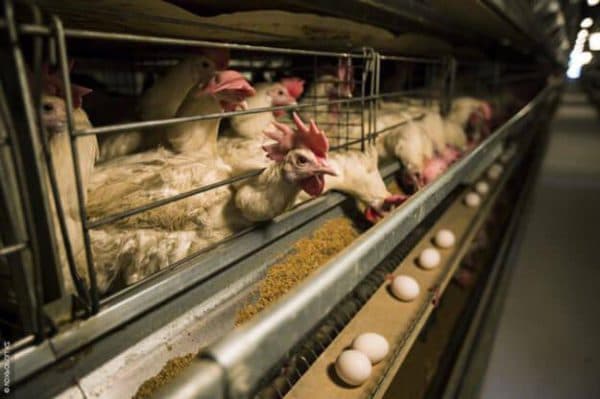

Reasons for content
- Breed.Depending on the type of bird, its purpose will also change. Regular hens produce fewer eggs per year than specially raised layers. There are egg breeds where egg formation takes about 24 hours. They are distinguished by high cyclicality, early maturity, lively temperament and mobility. These chickens have a low carcass weight after slaughter.
- Food. At the peak of egg wear, chickens should be provided with high-quality nutrition at the rate. It is recommended to feed the birds with wet mash with the inclusion of a beetle. Chalk, sand and water are important for the formation of eggs. In the involuntary content, it is necessary to include fresh vegetation. Read more about chicken feeding rates here.
- Temperature. With the onset of the cold period, the egg production of chickens decreases by almost 30%. Some breeds cannot stand the cold. To maintain productivity, the birds are provided with a warm room, preferably with additional heating.
- Lighting. This is one of the main factors in the increase in egg clutch. Light affects the release of sex hormones in chickens. Starting in the fall, they will need additional lighting, which will be an excellent stimulant. Ideally, the lighting should not be switched off for about 2 pm if the coop is dark. If young chickens are ripe for the winter periods, but do not begin to rush, then they can only be stimulated with the help of light.
With regular cleaning of the coop and adding fresh hay to the nests, the chickens begin to lay eggs better. If the coop is small, the birds are provided with adequate walking space.
How often chickens fly
Egg breeds and crosses are capable of laying on a daily basis, taking only a short break for molting. The record belongs to the chicken Leghorn, who laid 360 eggs in a year. Modern crosses are designed for productivity of 300-320 pieces.
This productivity is very difficult to obtain in a small household. Good indicators of the productivity of domestic chickens are 220-270 eggs obtained from each female.
Meat breeds, such as Kuchinsky Jubilee, Adler, Leningradsky, Amroks, lay about 200 eggs a year. Usually, the female lays eggs for 3-4 days in a row, then rests for a day. In autumn and spring, at the time of molting, pets take a break in laying for a week - one and a half.
What kind of chickens are you keeping?
Egg Meat
How many years chickens rush
Chicken can live and lay testicles up to 10-12 years old... The record is here again for the Leghorns - in the same farm, the chicken lived and laid clutches for 20 years!
The maximum productivity of domestic chicken is observed at 1-2 years of age., then she gradually reduces egg production. On large farms where gross egg yield is important, laying hens are discarded after the first or second year of the laying season. In a small household, chickens can be left up to 3-4 years old, observing egg-laying and rejecting bad individuals.
An egg in a hen's body matures within 24 hours, sometimes longer. Therefore, the laying hen is carried only once a day.
Every farmer should know about it
In order to maintain domestic chickens correctly, without losses and problems, you should also be aware that there are pauses during the period of egg production.
They can be caused by deficiencies in care and feeding, as well as by the characteristics of the immune system. Often the fault of the interruption of the production period is the natural molt, which each bird undergoes once in its entire life. This process starts at one year of age and lasts up to 5 months. Some layers are more prone to molt and should be discarded for this. Healthy chickens molt quickly and in parts.
Laying hens can also suffer from painful shedding, which also affects productivity. How long such a pause lasts depends on the state of the hens' immunity, as well as the actions of the breeder. Most often, the main culprits of this phenomenon are:
- content errors;
- lack of nutrients in the daily diet;
- stress;
- hormonal disruptions.
Questions and answers
Here, dear readers, I will answer the most common questions from poultry farmers - novices.
Are broiler chickens laid?
Yes, broiler chickens are able to lay like normal layers. They lay eggs weighing up to 85 grams, but they cannot boast of good egg production. The maximum broiler poultry lays 80-100 pieces per year, consuming feed 2-3 times more than the usual crock.
Which chickens fly best, white or red?
Genes of Leghorns - the most egg-laying chickens are present in every egg hybrid. In addition to their productive qualities, Leghorns also transmit their light color. Crosses with a brown feather color carry the genes of beef breeds responsible for the weight of the bird, slightly inferior in the number of eggs laid. This difference is insignificant, it is no more than 30 pieces per year.
Can a hen lay eggs without a rooster?
Can. The egg matures in the female's body, regardless of whether the male tramples it. Chickens rush without a rooster no worse than with a rooster, but no chickens will hatch from such a clutch.
Chickens rush badly in the summer, what should I do?
The reason for the cessation of egg-laying in summer may lie in the high air temperature. If the heat is above +28 degrees outside, the chickens lay fewer eggs, since they suffer from the heat in the same way as people.
To help the hens cope with the heat, equip the shade in the aviary, spray the walls and floor of the coop with cold water several times a day.
Like the author! 4
- Even more interesting:
- How to organize the correct feeding of turkey poults
- Proper care and rearing of mulard ducks
- How to feed broiler chicks for fast growth
Solving egg production problems in pullets
A common problem for poultry farmers is a failure in the bird's reproductive system. Then the chickens begin to lay on time and show good results, but after a while the owner does not find the eggs in the right place. There can be several reasons for such troubles.
Chickens tend to change laying places. The farmer is advised to check shaded snug spots in the chicken coop or throughout the walk. Chickens begin to rush under the trees, in the grass, in the corner of the barn in a heap of litter. So they try to protect the nest from the encroachments of predators if they notice the constant loss of eggs from their usual places. To prevent such unauthorized relocation, tennis balls are left in special nests, which look like eggs, or blendes purchased in veterinary stores.
In just a year, the laying hen has 2-5 breaks in reproduction, which last 3-4 weeks. They are needed to renew the strength and reserves of necessary elements inside the body. The maintenance of birds at this time by adding vitamin complexes, extending free range, and eliminating stress factors will have a positive effect. Then the chicken after rehabilitation rushes in the same quantities as before the break.
During molting periods, pullets also stop laying. Changing the feather cover requires significant costs, so there is no energy left to bear eggs. Aggression of individuals towards each other, when they peck their relatives to the blood, can become a frequent phenomenon. Therefore, in this case, you also need to take care of the most comfortable conditions - shaded places in the poultry house, organization of space with a calculation of at least m² for 5 birds, food rich in calcium, magnesium, phosphorus.
The reason for interruptions in egg production can be predators or parasites, bird ailments. When laying hens feel uncomfortable, under the influence of constant stress, sleep poorly and do not eat, their productivity drops sharply. Elimination of the cause will lead to the resumption of the reproductive functions of chickens.


